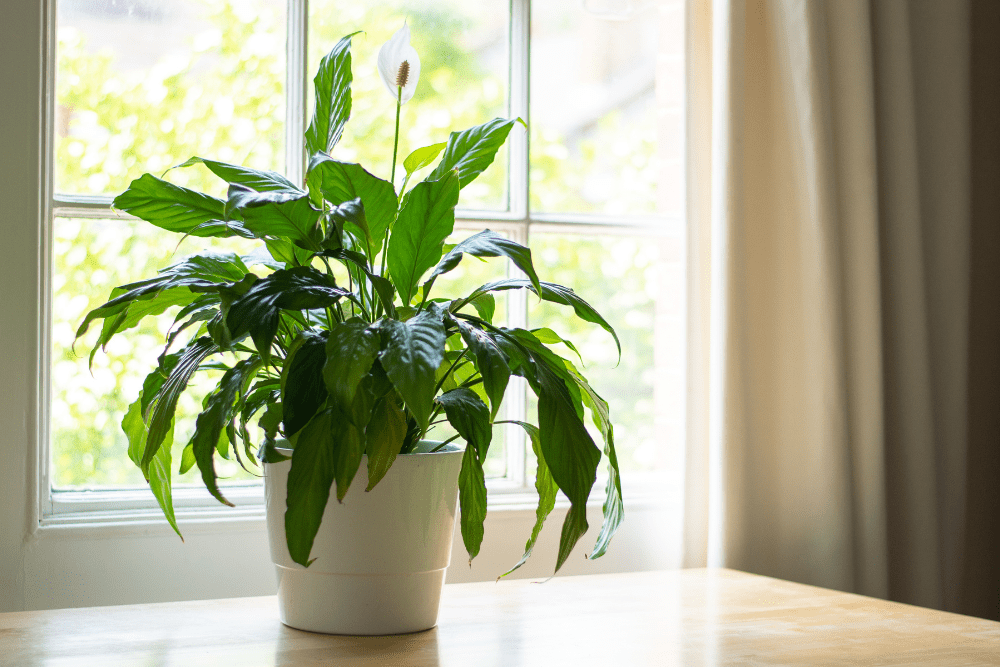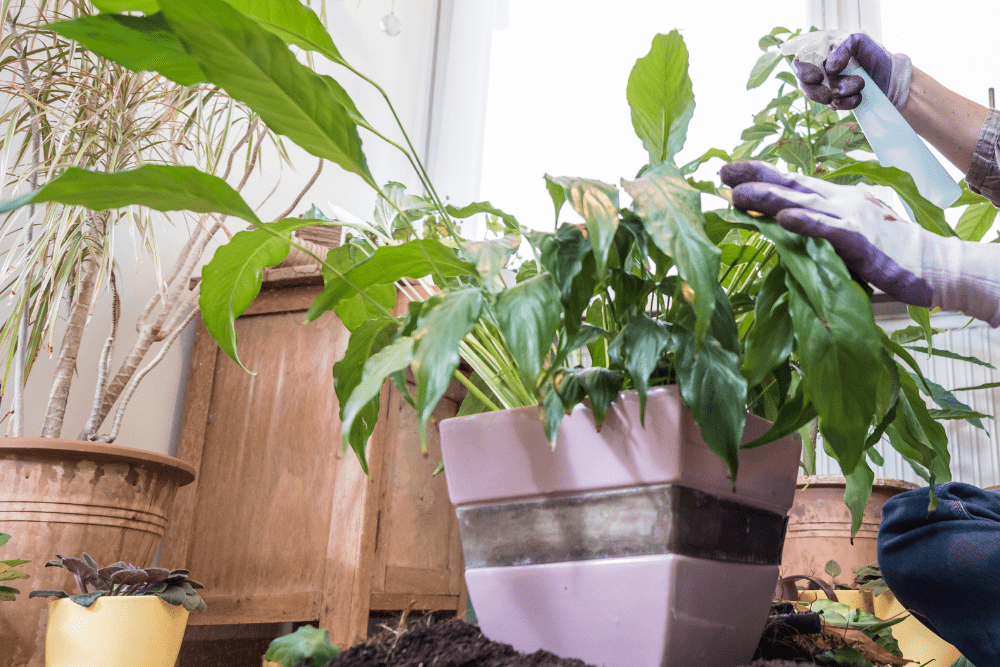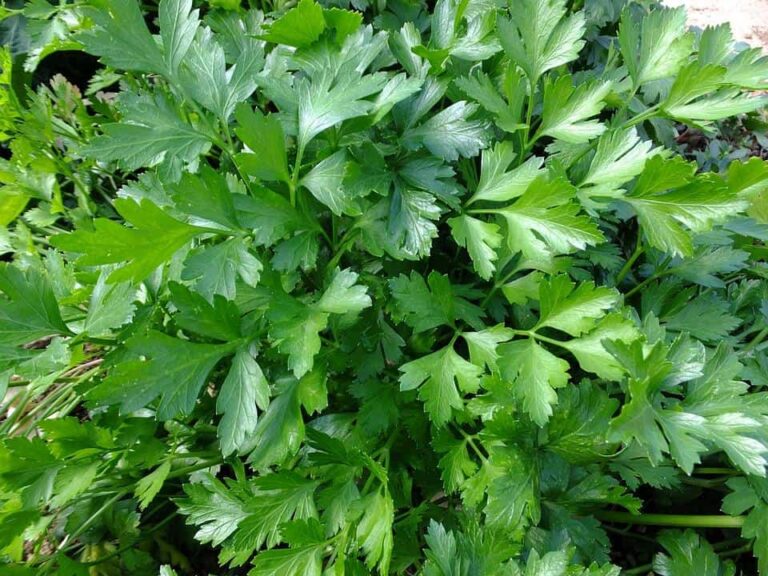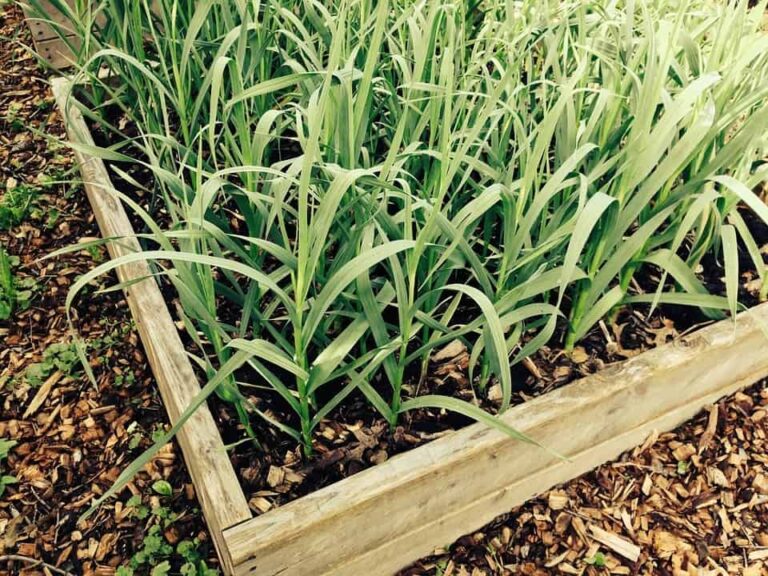Overwatered Peace Lily – Signs + How to Revive the Plant
Peace Lilies are a beautiful houseplant to keep. They help to purify indoor air from any pollutants you may be surrounded by, they prevent mildew build-up in bathrooms because they absorb excess moisture, and they’re just generally a very pretty plant to look at as well!
However, they are notoriously sensitive, which makes them difficult to look after. While most plant owners worry about underwatering their plants, you need to be concerned about overwatering them as well.
In this article, we will cover the main signs that you are overwatering your peace lily and what you can do to help revive it.
Why Is Overwatering A Peace Lily Bad?
Overwatering is a problem for peace lilies because if they drink up too much water, the leaves will become overfilled and the roots will become damaged.
This is because they can’t access oxygen, as water has taken over the soil. When there are no air pockets around the roots, they will start to suffocate in the oxygen-less environment.
As well as this, a large amount of water in the plant pot will accelerate the rate at which the leaves, roots, and stem will rot.
Rot causes a number of fungal and bacterial diseases, which is the starting point for a number of the visible signs that you are overwatering your plant. Read on to find out what these are:
Visible Signs That You Are Overwatering Your Peace Lily
- If water is running straight through the peace lily’s pot to its drainage saucer when you water it, it means that the root system is damaged or waterlogged.
- Your peace lily may have yellowing or brown-edged leaves and leaf tips.
- The leaves may be wilting dramatically.
- There may be stunted growth of both the leaves and the flowers.
- The roots have black tips and are very weak and frail.
These signs are caused by a lack of oxygen and infection. Some of the infections include Cylindrocladium, Rhizoctonia, and Phytophthora.
Don’t panic though – all is not lost! Below, you will find a detailed guide explaining how to bring your lily back to its thriving state.

How Can You Revive Your Overwatered Peace Lily?
One of the first things you should do to revive your plant is to stop watering it immediately and place the pot somewhere it can access a lot of sun. This will help to dry up the water-logged soil, allowing some oxygen back into the plant.
If there are signs of infection, you are going to have to take the lily out of its pot. Throw away the soil, as it will still carry some of the infection.
Have a look for root damage, and if you see any, trim off these parts with some shears. You should also cut off any of the affected leaves (the ones that have changed color) at the base of the stem.
You can also help to treat your peace lily’s root system with a fungicide if you have one to hand.
Now all you have to do is repot your lily in a fresh pot of soil and leave it somewhere it can get some indirect sunlight for a few days to make sure there is no excess water left.
You should consistently check for humidity and temperature as well over the next couple of weeks. The leaves should soon start to perk up again, letting you know it’s on the mend.
Things To Consider For The Future
Emptying The Drainage Saucer
For your plant to thrive after it’s been watered, it needs to have an adequate drainage system. This means that the bottom of the peace lily pot needs a drainage hole, with the soil loosely placed over the top of this to let the water drain out.
The water should run through to the saucer underneath it in around 10 minutes’ time. You have to make sure you regularly empty this saucer. Otherwise, the plant will be sitting in waterlogged conditions which will contribute to suffocation of the roots, and rot.
Pot Size
There is no specific pot size that works best with a peace lily, but you will have to adapt your pot size to the rate at which your lily is growing.
The easiest sign to look out for a peace lily needing a bigger pot is if the roots obviously start to show through the hole at the bottom of the pot.
This means that the root system is out-growing its current container. Some researchers say that if you have your peace lily in a pot larger than 10 inches, that should be okay.
Season
While peace lilies don’t actually need the sun to be healthy, they do like warm climates. This means that they won’t fare as well in the Autumn and Winter months.
They won’t necessarily die from the cold, but you might want to think about moving it to a bathroom where they can get warm moisture, or watering it less frequently if you do decide to keep it in the cold, as it will take longer to dry out.
Pot Material
The pot material won’t make or break or a peace lily, but you do need to be aware of how the type of material that surrounds it will affect its water levels.
Porous materials, such as wood and terracotta, will absorb some of the moisture from the soil. This means that the water will essentially be drained faster.
If you have a ceramic or plastic pot, the non-porous nature of these materials will keep all of the water you feed your peace lily firmly in the soil.
This means that you are more likely to overwater your lily if it is in a ceramic or plastic pot.
Temperature And Airflow
If your peace lily isn’t thriving in the room it’s currently in, it may be that the room is too cold and breezy. While lilies can survive in cold conditions, they may not be happy about it.
To help them along, think about moving them to a warmer, humid room like a bathroom. Peace lilies can easily absorb the moisture from these types of conditions, which means you also won’t have to worry about watering it as often.
You may also question whether your dying peace lily is actually being underwatered, rather than overwatered. To help you with this, below we have listed the signs of an underwatered lily.

Signs Of An Underwatered Peace Lily
- It has dry and crispy, yellowing leaves.
- The top 1-2 inches of the lily’s soil are dry.
- There are dry, brown spots on the plant.
- Underwatered leaves are often wrinkled and curled in.
- The lily has dry, brittle roots.
Frequently Asked Questions
How Do You Know When You’re Supposed To Water Your Peace Lily?
While you can invest in electric gear to help determine when to water your peace lily, such as a water meter, you can also use the ‘knuckle test’.
To do this, you have to push your finger into the soil surrounding your lily. If it feels moist after your first knuckle has reached the top of the soil, you shouldn’t water your plant. If it feels dry, however, then please water it!
What Is The Best Way To Water A Peace Lily?
If your plant’s soil is dry, the first thing you have to do is take the pot to your sink. Start pouring tap water over the soil, until you start to see the water coming out of the bottom of the pot.
This means it has had enough to drink. Now, you have to let it drain in the sink for a while so that it won’t get water-logged in its drainage saucer.
Once you’ve done this, return it to its saucer and keep an eye out for any more water on the saucer. If it starts to sit in a pool of liquid, let it drain some more in the sink.
Are Peace Lilies Hard To Take Care Of?
Peace lilies aren’t hard to take care of – they are actually very lenient when it comes to how much sunlight they’re exposed to. They don’t need much sun or water to thrive indoors.
However, they are sensitive to an excess amount of water, so you do have to be careful about how much you water them.






